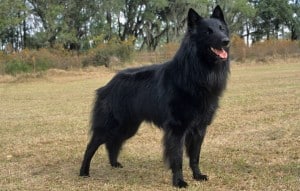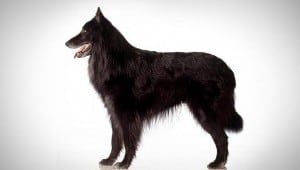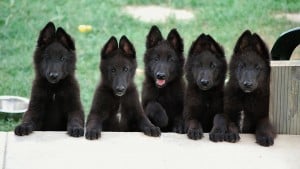
This breed has also been used as guide dogs, rescue dogs, and therapy dogs. During World War I, these canines were messengers, they hauled machine guns, and were ambulance dogs. The Belgian Sheepdog Club of America was established in 1919. The AKC made a decision on 07/01/59 that stated that the Groenendael is allowed to be registered as the Belgian Sheepdog. The dog has to have a third generation ancestry. The Belgian Malinois and the Belgian Tervuren are considered different breeds by the AKC.
General Looks
The muzzle is long. The eyes are round and dark. The ears stand up, are placed high on the head, and are rectangular shaped. The neck is muscular and of moderate length. The shoulders are angular. The chest is narrow and medium deep. The tail is long.
Is This Your Breed?
The Belgian Sheepdog sheds all year long. It needs a lot of brushing to keep mats and tangles out of the fur. This breed needs a thorough brushing each week and a brushing each day, less intense brushing daily helps lessen the length of the thorough brushing. These dogs really like a lot of work to perform. They need regular exercise. They get on with gentle kids. They are protective.
Coat of a Belgian Sheepdog
The coat is doubled. The outer coat is long, straight, and thick. Its texture is harsh, but not extremely so. The undercoat is soft. The undercoat will be thicker or less thick according to where the dog lives.
Color
The color is black. Small areas of white on the chest, toe’s tips, and between the paw pads is okay. A show dog can’t have white on its front paws. The muzzle of some will look salt and pepper.
Locomotion
The movement looks free, smooth, and easy. It doesn’t depend on hard rear drive, but fluency of movement. When performing a quick gait, the Belgian Sheepdog single tracks.
Personality

It is a sensitive canine that reacts to any disapproving sound its owner makes. Thus, it needs good socialization early on so it won’t develop shyness or aggressiveness. Socialization from a pup produces a well adjusted dog that is a great family pet, guard dog, and companion.
This breed should be around children early on to get used to the noise and and movement of small kids. Be careful when introducing new people because this breed is very protective. It may chase cats, but gets on well with those known from puppy-hood. It is better with other dog breeds that aren’t dominant.

